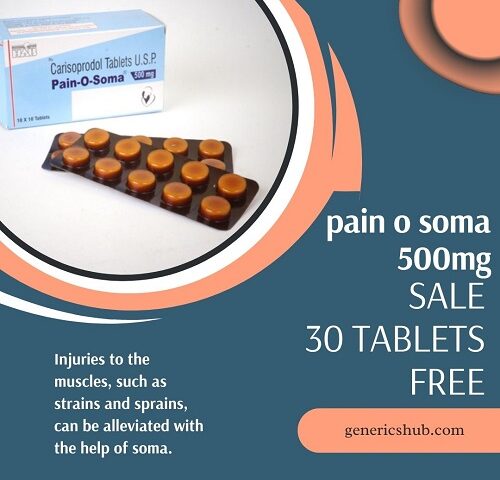Muscle soreness and stiffness are common phenomena experienced by individuals engaged in physical activities, ranging from athletes pushing their limits to individuals engaging in everyday tasks. Understanding the underlying factors behind these sensations is crucial for optimizing training regimens, preventing injuries, and enhancing overall well-being. In this comprehensive guide, we delve into the main factors contributing to muscle soreness and stiffness, providing insights to help you navigate through these sensations effectively.
The Role of Exercise Intensity and Duration
Exercise intensity and duration play pivotal roles in triggering muscle soreness and stiffness. Engaging in high-intensity workouts or prolonged physical activities can lead to microscopic damage to muscle fibers, resulting in soreness and stiffness. Eccentric muscle contractions, which involve lengthening of muscles under tension, are particularly notorious for inducing post-exercise soreness. The greater the intensity and duration of exercise, the higher the likelihood of experiencing muscle discomfort afterward.
Inflammatory Response and Muscle Damage
Inflammatory response and muscle damage are closely intertwined with muscle soreness and stiffness. Intense physical activity can induce microtrauma to muscle fibers, triggering an inflammatory cascade as the body initiates the repair process. This inflammatory response, characterized by the release of cytokines and other immune mediators, contributes to the sensations of soreness and stiffness. While inflammation is a natural part of the healing process, excessive or prolonged inflammation can exacerbate muscle discomfort.

Metabolic Waste Accumulation
Metabolic waste accumulation within muscles is another factor contributing to post-exercise soreness and stiffness. During strenuous activities, the muscles undergo anaerobic metabolism, leading to the accumulation of metabolic byproducts such as lactic acid and hydrogen ions. These byproducts can impair muscle function and contribute to the sensations of discomfort. Adequate hydration and proper recovery strategies can help mitigate the buildup of metabolic waste and alleviate muscle soreness.
Muscle Fatigue and Neuromuscular Adaptations
Muscle fatigue and neuromuscular adaptations also influence the development of soreness and stiffness. Prolonged or repetitive muscle contractions can lead to temporary depletion of energy stores within muscle fibers, resulting in fatigue. Additionally, the nervous system undergoes adaptations in response to repeated stimuli, affecting muscle recruitment patterns and proprioception. These neuromuscular changes can contribute to altered movement patterns and increased susceptibility to soreness and stiffness.
Individual Variability and Genetic Factors
Individual variability and genetic factors play a significant role in determining susceptibility to muscle soreness and stiffness. Factors such as age, sex, fitness level, and genetic predisposition can influence how individuals respond to physical activity. While some individuals may experience minimal soreness even after intense workouts, others may be more prone to prolonged discomfort. Understanding individual differences can help tailor training programs and recovery strategies to optimize performance and minimize discomfort.

Hydration and Electrolyte Balance
Hydration and electrolyte balance are crucial factors in mitigating muscle soreness and stiffness. Dehydration can impair muscle function and exacerbate discomfort, as adequate hydration is essential for maintaining optimal muscle function and facilitating metabolic processes. Similarly, electrolyte imbalances, particularly deficiencies in minerals such as potassium, magnesium, and calcium, can contribute to muscle cramps and stiffness. Ensuring adequate fluid intake and electrolyte replenishment is essential for optimizing recovery and reducing the risk of muscle soreness.
Importance of Proper Warm-up and Cool-down
Proper warm-up and cool-down routines are essential for preventing muscle soreness and stiffness. A thorough warm-up prepares the body for exercise by increasing blood flow to muscles, enhancing flexibility, and priming the nervous system for activity. Incorporating dynamic stretches, mobility drills, and light cardiovascular exercises can help prepare the muscles for the demands of exercise. Similarly, a gradual cool-down allows the body to transition from exercise to rest, promoting circulation, reducing muscle tension, and facilitating recovery.
Recovery Strategies and Techniques
Recovery strategies and techniques are integral components of any training program aimed at minimizing muscle soreness and stiffness. Incorporating modalities such as foam rolling, massage therapy, and contrast baths can help alleviate muscle tension, improve circulation, and promote tissue repair. Additionally, prioritizing adequate rest and sleep is essential for allowing the body to recover and adapt to the demands of training. Active recovery activities such as yoga, swimming, or leisurely walks can also facilitate recovery while promoting relaxation and mobility.
Conclusion
In conclusion, muscle soreness and stiffness are multifaceted phenomena influenced by various factors, including exercise intensity, inflammatory response, metabolic waste accumulation, neuromuscular adaptations, individual variability, hydration, and recovery strategies. By understanding the main factors behind these sensations and implementing appropriate strategies, individuals can effectively manage muscle discomfort, optimize performance, and promote overall well-being.




